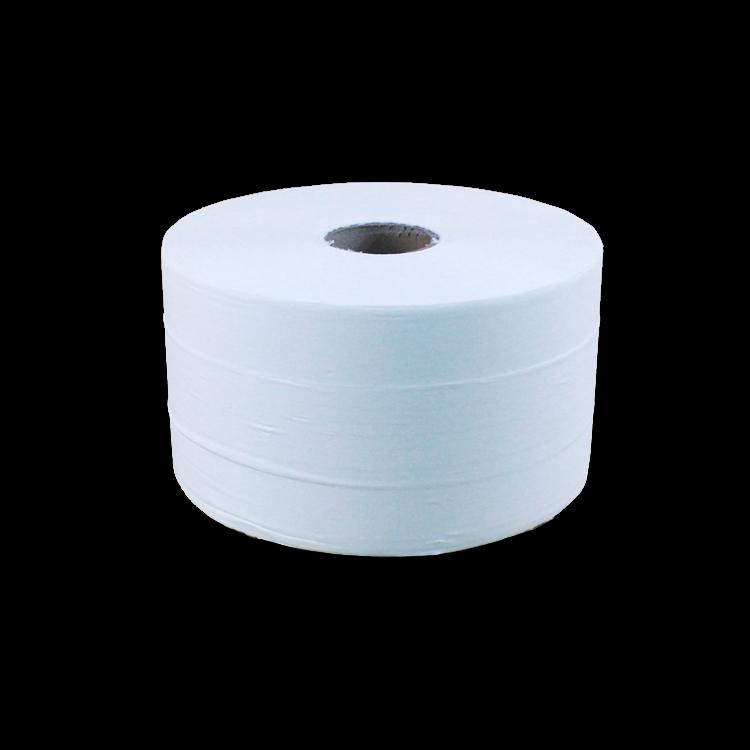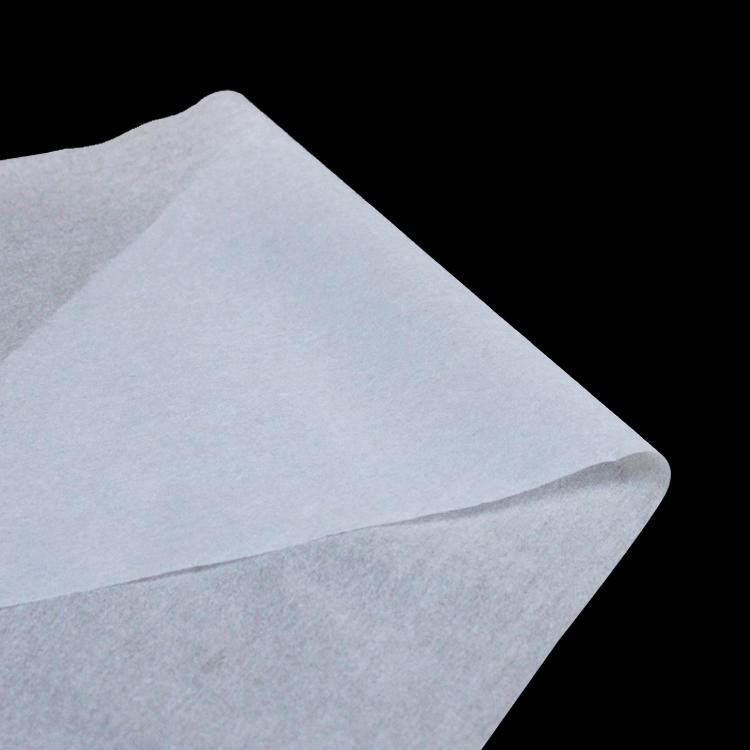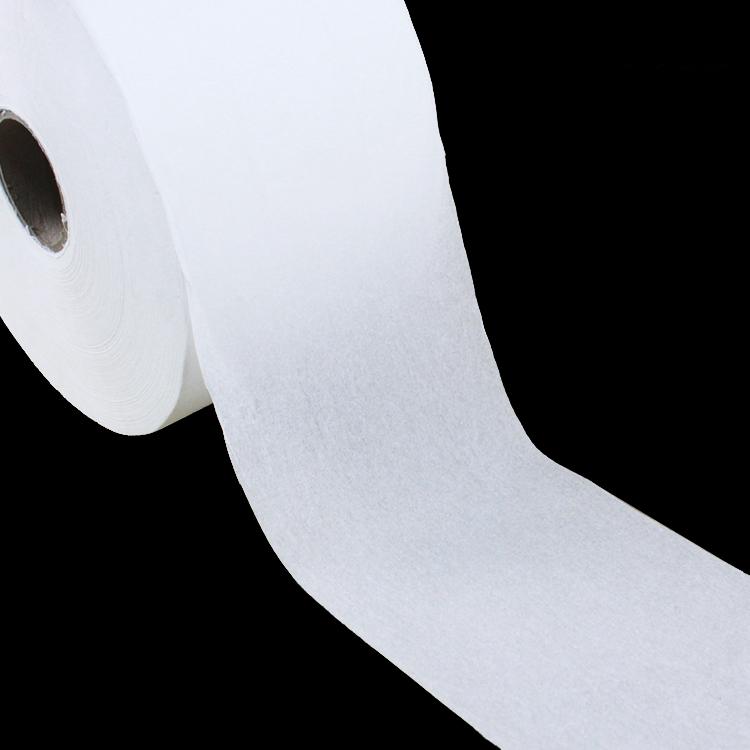Author:Baby & Adult Diaper Materials FROM:Diaper Materials Manufacturer TIME:2023-03-07
Sanitary napkins are essential for women's hygiene and health care. They are popular among women because they are highly absorbent, comfortable to use and easy to carry. The following is sanitary napkin raw material list.
Pulp: is the production of sanitary napkins and diapers must absorb the body material, accounting for about one-third of the total cost of raw materials, requiring soft, absorbent and high strength, foreign countries mostly with high methyl fiber content of dissolving pulp board, Canada, the United States or Sweden and other countries production. Specifications mostly used roll, width: 420mm, outer diameter 1000mm, inner diameter 75mm, weight: 166kg.
Most of the domestic use flat pulp board. Regardless of the roll or flat pulp must be crushed into cotton wool through the crushing system for absorbent padding.
Non-woven as important as pulp, is also an absorbent material, accounting for about one-third of the total cost of raw materials. It is composed of rayon and chemical fiber made of wood pulp. Due to the high-speed automation of sanitary napkin manufacturing machinery and the continuous improvement of sanitary napkin structure, the requirements for non-woven fabrics are becoming higher and higher. Specific requirements:
(1) Smooth and strong surface, no deformation and no breakage after blood infiltration.
(2) Soft: thin texture, soft to the touch, no foreign body feeling in contact with the skin
(3) one-way permeability: a certain degree of breathability and absorption performance, but its side should have weak water resistance, that is, after infiltration of menstrual blood and then pressure will not return. The surface is dry so that the baby's skin contact will not cause diaper rash.
(4) dry and wet strength and rapid thermal plasticity: can adapt to the strength conditions and heat sealing requirements required for high-speed operation of sanitary napkin manufacturing machines.
(5) The choice of adhesive: The adhesive used for sanitary napkins cannot contain compounds such as formaldehyde that irritate the skin, so that the non-woven fabric does not produce allergies when in contact with the skin.
Foreign non-woven fabrics are mostly used in the manufacture of law, the raw materials used are viscose rayon fiber, polyethylene filament fiber, polypropylene filament fiber, acrylic filament fiber, nylon filament fiber, polyester filament fiber, etc.

Absorbent paper: thin filling grain toilet paper, the rise is coarse cheating rate of 40%. Require a certain strength, soft paper, strong water absorption. The role of two aspects, one for the convenience of machine operation, for laying paper cotton, the second to facilitate the diffusion of menstrual blood, when the absorbent material for menstrual blood quickly after the point absorption, absorbent paper can quickly make menstrual blood evenly spread to the entire absorbent material.
The characteristics of the adhesive with the release paper are that it melts with heat and is sprayed on the back of the sanitary napkin with a spray gun. After cooling, the adhesive remains for a considerable period of time so that the sanitary napkin can stick to the bottom without moving and the user can move freely. In addition, it can also make the non-woven fabric and non-woven fabric sticky, in order to strengthen the two ends of the sanitary napkin seal. When choosing a hot melt adhesive, you should pay attention to whether it is suitable for the hot melt adhesive machine and its gun, and should choose the water-soluble one. Hot melt glue using temperature 150 ℃ ~ 200 ℃, viscosity 150 ℃ 3025 CPS (centipoise). The back of the sanitary napkin is sprayed with hot melt adhesive and then covered with a silicone-coated release paper.
One side of the release paper is silicone-treated, extremely smooth and non-stick, and is used to protect the hot-melt adhesive on self-adhesive sanitary napkins and to prevent the hot-melt adhesive from losing its adhesion when exposed to air. When using sanitary napkins, the adhesive side of the back of the sanitary napkin can be attached to the bottom by removing the release paper. Generally, sanitary napkin manufacturers print the company name or trademark on the other side of the release paper as the product logo to increase product aesthetics and advertising effectiveness. When ordering release paper, the width can be adjusted depending on the width of the general adhesive backing, and the width of the adhesive backing can be adjusted by the gun. Mini (small) can be used 1.5cm, but also some factories use 8cm to print trademarks as publicity.
Anti-leakage film: the main role is to prevent menstrual blood leakage, generally with PE (polyethylene) film, thickness of about 0.02mm, if too thick, the edge part of the menstrual blood will harden after cooling, may cause the user's discomfort, so the purchase of leak-proof film, must pay attention to its thickness and width, the width of the best sanitary napkin two sides of the middle, the user more comfortable.

There are also composite paper for leak-proof film, generally in the quantitative 14g / square meters of absorbent paper table repeatedly combined with a layer of 0.015mm PE film.
The above is sanitary napkin raw material list. as people's living standards continue to improve, people's awareness of health and hygiene continue to increase, the demand for sanitary napkins is bound to be greater and greater.


 Email: info@whldiapernonwoven.com
Email: info@whldiapernonwoven.com
 MP/WhatsApp: +86-13599937366
MP/WhatsApp: +86-13599937366
 Manufacturer Address:Room 1105B, Bld M1, Manhattan, Yulongwan, Shimao, Shuanglong Road, Meiling Street, Jinjiang, Fujian, China
Manufacturer Address:Room 1105B, Bld M1, Manhattan, Yulongwan, Shimao, Shuanglong Road, Meiling Street, Jinjiang, Fujian, China